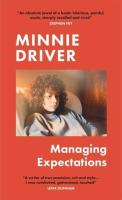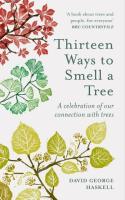November has a plethora of reading themes and challenges, and Non Fiction November is one of my favourites, precisely because it does encourage me to read more of it! This year so far 27/118 books I’ve read have been NF which is 23% up on last year in numbers and percentage of books read.
This year week 1 of Non Fiction November is hosted by Doing Dewey, who asks us to reflect on the following questions:
What was your favourite nonfiction read of the year?
It’s always impossible to limit it to just one – but these three have stuck with me well…

- Through a Vet’s Eyes by Dr Sean Wensley – subtitled ‘How We Can All Choose a Better Life for Animals’ this book opened my eyes to how we care for and treat the animals which we rear to eat, use for work and leisure, or for companionship at home. His writing combines a love of nature with stories from his vet training and also a polemic about how we treat the animals with some shocking home truths. Most chapters concentrate on one type of animal – so we learn about chickens, pigs, cows, sheep, horses, pets, plus a separate chapter on slaughter alongside the wild animals he encounters.
- Good Pop, Bad Pop by Jarvis Cocker – the Pulp frontman and general culture vulture writes his memoir of his teenage years up to the beginnings of success with Pulp through a treasure trove of ephemera and objects found in the attic, which he decides whether to keep or chuck. Beautifully produced, only Jarvis Cocker could write a memoir like this.
- From Spare Oom to War Drobe by Katherine Langrish. Her account of re-reading the Narnia series by CS Lewis as an adult was the ideal end-point to a month by month re-read of said series starting last December, hosted by Chris. Langrish is a children’s author and fairytale essayist and the perfect person to analyse the enduring appeal of the Narnia books.
Do you have a particular topic you’ve been attracted to more this year?

I’ve read a lot of memoirs, but they can also be categorised further into types – from travel and nature based to medical ones, plus books about books and my perennial favourite of culture / media / rock’n’roll! The latter wins out again this year. Alongside Jarvis above, I particularly enjoyed Minnie Driver, BBC newsman Justin Webb, Sewing Bee’s Esme Young and Richard E Grant‘s memoirs!
What nonfiction book have you recommended the most?

Just this past week I’ve been recommending Thirteen Ways to Smell a Tree by David George Haskell. It would be a super stocking filler for tree lovers.
What are you hoping to get out of participating in Nonfiction November?
Still to simply to keep me reading and enjoying NF, and finding some more titles to look out for!


All I can say is that all the real-life non-fiction going on in the world must have sated me because I’ve almost exclusively read fiction this year – apart from a title on the Mabinogion and another on Renaissance stage design. Hmm.
Nice choices there. I couldn’t pick even three favourites but I do read a lot of NF.
wow, this last book on trees is going right away to my TBR, thanks!
I have read a few memoirs as well: https://wordsandpeace.com/2022/11/02/nonfiction-november-my-year-2022-in-nonfiction/
I love trees but I haven’t really read any books about them. Need to change that.
Thirteen Ways to Smell a Tree certainly sounds like a book I’d like to read. Thank you for sharing it.
I’ve put 13 ways to smell a tree on my buy list for my son for Christmas. The Narnia re-read sounds very interesting. I didn’t even know they existed as a child (I still don’t like much fantasy) but read several as an adult. You’ve got some very interesting books here–I will be checking a few out in more detail–thank you!
Good choices. I generally rather read biographies than memoirs. I think that people might not be completely open about their own lives. But, it also depends on the story that is told.
Thirteen Ways to Smell a Tree is a delightful name for a book.
I’m definitely interested in advocating for better treatment of animals, but don’t think I can bring myself to read a book like Through a Vet’s Eyes. The way we treat animals right now is just so terrible, I prefer to only know as much as I need to in order to support change!
‘Kiss Myself Goodbye’, Ferdinand Mount’s account of his aunt by marriage’s serial self-invention is a fascinating tale of ruthless upward mobility during the first part of the 20th century.